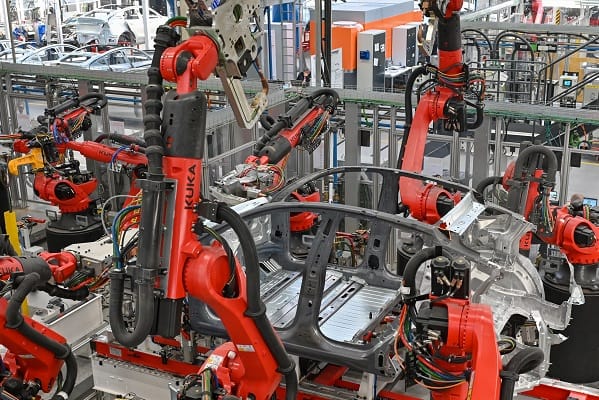The air emitted from industrial operations is often laden with harmful gases like sulfur dioxide and particulate matter, which can severely impact the environment. Gas scrubbers help remove some of the most dangerous materials from released emissions, minimizing environmental harm and promoting cleaner air. Let’s explore how these devices contribute to industrial and environmental sustainability.
The air emitted from industrial operations is often laden with harmful gases like sulfur dioxide and particulate matter, which can severely impact the environment. Gas scrubbers help remove some of the most dangerous materials from released emissions, minimizing environmental harm and promoting cleaner air. Let’s explore how these devices contribute to industrial and environmental sustainability.
What gas scrubbers are and how they work
Overview of gas scrubbers
A gas scrubber is an essential industrial device designed to reduce pollutants in gas emissions. Common contaminants, including nitrogen oxides and sulfur dioxide, are by-products of many chemical processes. These pollutants can lead to significant environmental damage if not properly controlled, which is why scrubbers are generally installed at the end of exhaust systems to filter these harmful compounds effectively.
Mechanism of scrubbers
Gas scrubbers operate by directing polluted exhaust gas through a chamber filled with a chemical solution that interacts with the contaminants, either physically or chemically binding to them. This process leaves the exiting gas much cleaner, contributing to better air quality. Some advanced scrubbers even feature multi-stage filtration systems to tackle a variety of pollutants. Each filtration stage is optimized to capture specific contaminants, making them highly effective in facilities with complex emissions.
Types of gas scrubbers
1. Wet scrubbers
These scrubbers use a liquid solution to absorb or dissolve pollutants, making them particularly useful for capturing gases such as sulfur dioxide. The liquid solution typically interacts with the pollutants, neutralizing or trapping them within the scrubber chamber.
2. Dry scrubbers
Dry scrubbers, on the other hand, employ a solid material or powder to capture contaminants. This method is effective in facilities where moisture control is necessary, as it doesn’t rely on liquid-based reactions.
3. Packed bed scrubbers
For emissions containing a mix of contaminants, packed bed scrubbers offer an effective solution. They are built with multiple layers of filtration materials, each layer designed to absorb different kinds of pollutants as the gas passes through.
Selecting the right scrubber
The ideal scrubber type depends on the nature of contaminants and the volume of gas needing treatment. For example, industries with high sulfur emissions may benefit most from wet scrubbers, while facilities with mixed contaminants might opt for packed bed scrubbers. By choosing the correct scrubber, industries can effectively manage emissions and protect the environment.
Why gas scrubbers are essential in reducing gas emissions
Gas scrubbers are crucial for mitigating harmful emissions. Here’s why they are indispensable:
Lowering harmful emission pollution
Industrial emissions typically contain heavy metals and gases like nitrogen oxides and sulfur dioxide, which can harm the surrounding environment and ecosystems. Scrubbers effectively remove these harmful materials, reducing the environmental footprint of industrial activities and helping to maintain a cleaner, healthier environment.
Reducing acid rain occurrence
Sulfur dioxide, when released into the atmosphere, dissolves in rainwater to form acidic compounds. Acid rain can corrode infrastructure, harm ecosystems, and degrade land and water quality. Wet scrubbers are particularly effective at filtering out sulfur dioxide, helping protect ecosystems from the adverse effects of acid rain.
Helping ships reduce fuel costs
The International Maritime Organization (IMO) mandates a global sulfur emissions cap for ships at 0.5% m/m (mass by mass). Many ships run on high-sulfur fuel oil (HSFO), which exceeds these limits. Installing scrubbers allows shipowners to meet emissions standards without switching to more expensive, low-sulfur fuel, saving on operational costs.
Maintaining outdoor air quality
Airborne contaminants, often from industrial sources, can negatively impact cardiovascular and respiratory health. With many people spending substantial time outdoors, a polluted environment can exacerbate health issues. Scrubbers ensure that emissions from industrial plants don’t compromise air quality, reducing pollution-related health risks and associated healthcare costs.
Enabling regulatory compliance
Numerous environmental regulations require industries to limit pollutant emissions. In the U.S., for instance, the Environmental Protection Agency (EPA) monitors and enforces pollutant limits. Installing gas scrubbers not only demonstrates corporate responsibility but also ensures compliance with environmental standards, helping companies avoid fines and legal repercussions.
Gas scrubbers are thus indispensable in both industrial processes and maritime operations. By capturing pollutants before they enter outdoor air or oceans, scrubbers protect public health and ecosystems alike. Available in dry, wet, and packed bed varieties, each scrubber type addresses different pollutants based on the volume and nature of emissions. Beyond their environmental and health benefits, scrubbers provide companies with a cost-effective means to meet regulations and avoid potential fines or penalties, making them a vital asset for sustainable industrial growth.








